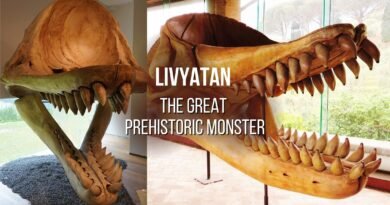The flying dinosaurs that will surprise you
Pterosaurs were flying reptiles of the Chordata phylum. They existed during the Mesozoic, the Late Triassic, and the end of the Cretaceous period (228 to 66 million years ago). They are the earliest vertebrates who are empowered to fly. Their wings were formed through the membrane of skin, muscle, and other tissues, which stretched from ankles to the fourth finger. The five flying dinosaurs were Pteranodon, Quetzalcoatlus, Pterodactyl, Aerotitan and Haopterus.
In this article, we will learn about five dinosaurs that will surprise you forever. So, make sure you read this article until the end. We promise; you will learn a lot.
- Pteranodon
The Pteranodon was highly modified from their reptilian ancestors. Their bones were hollow and air-filled like those of normal birds, and it provided a higher muscle attachment surface for the skeleton weight. The walls of the bone were thin as paper. These dinosaurs have large breast bones and an enlarged brain to coordinate the complex flight behavior.
The wingspan of adult Pteranodon was about 5.6 meters. Their fossils and related forms are found in Europe, South America, and Asia in the marine environment. Their living period was 89.8 million years ago to 70.6 million years ago. Pteranodon was a distant dinosaur cousin who went extinct along with dinosaurs. Being carnivores, they required meat for food and taming.
- Quetzalcoatlus
Quetzalcoatlus are Pterosaurs from the late Cretaceous period. They belong to advanced toothless Pterosaurs who usually have long and stiff necks. The fossils of an individual Quetzalcoatlus can be seen to have a wingspan of 15 meters. Their remains are mostly found in mainland Texas in places like Big Bend National Park in the Southern Western part of Texas.
They were carnivores and skimmed in the water to find their prey. Their prey was the arthropods like early Crayfish and dying animals. Sources believe they have eaten more than just fish. They were Swift striders of land who hunted for food on foot on solid ground. They also used all four limbs to make a standing jump into the sky. Apart from this, these creatures are highly interesting and research continues upon them even today.
- Pterodactyl
Pterodactyl is an extinct genus of Pterosaurs. There are over 30 fossil specimens that mostly belong to the juvenile population. They are relatively small pterosaurs with a wingspan of about 1.04 meters. The skulls of the adult pterodactyl were long and thin, with nearly 90 narrow and conical teeth.
The teeth of the pterodactyls extended back into the jaw compared to close relatives. They lived about 145 million years ago, and their fossils are preserved in Bavaria, Germany. They were carnivores who ate meat such as fish, eggs, and crabs. These creatures also usually lived near the sea, where they could hunt their food easily in the trees and the caves. Pterodactyl was likely to live in forested areas.
- Aerotitan
Aerotitan belongs to the late Cretaceous period of the Chordata phylum. It represents a large flying reptile consisting of a partial rostrum with a preserved length of 265 mm. They are elongated and transversely compressed with toothless jaws. The wingspan of the aerotitan is estimated to be at least 5 meters.
According to 2021 studies, the specimen represented the presence of lower jaws but not upper jaws. The first fossil record was found 83.5 million years ago. It lived in terrestrial habitat, and Aerotitan were carnivores who reproduced by laying eggs. It is very similar to Quetzalcoatlus in terms of narrowness and rostrum.
- Haopterus
Haopterus were Pterosaurs of the Lower Cretaceous age. They also belong to the Chordata phylum. The skull of Haopterus was about 145 mm in length, and their snout was pointed but rounded. The skull opening was elongated and elliptical with a length of 4 cm. The lower jaw had a length of 128 mm with strong and sharp teeth. Haopterus typically occurs in shallow, silty water attached to solid substrates.
They lived on the sea bottom in U-shaped tubes. Especially found in the Atlantic and Pacific Oceans. These creatures also prefer coastal habitats in temperate and tropical locations. The diet of Haopterus was a whole package: mucus, plankton, and many more. Their bodies were also highly efficient filter-feeding machines.
The bottom line
The Pterosaurs were flying dinosaurs usually found during the Jurassic, Mesozoic, Triassic, and Cretaceous periods. They could fly like birds with enlarged skulls. Pterosaurs were giants who could reach the height of a modern Giraffe. They were extremely light in comparison to their size, and it was because of the low density of their soft tissue.
The fossils of the flying dinosaurs remain preserved in many world areas. Their habitat and dietary habits were similar to each other, with the power to fly and a unique bone structure. These dinosaurs sometimes surpassed the length of modern-day Giraffes. Their skulls were light-weighted to provide an easy to fly experience.




